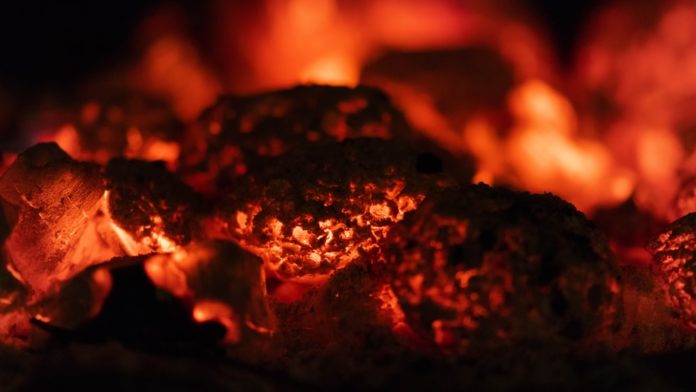
IT’S sometimes said that the biggest challenge for executives is not how they cope in the hard times, but how well they allocate cash when times are good. That may be a theme worth watching at the Johannesburg Stock Exchange’s two main coal companies, Thungela Resources and Exxaro Resources.
Both benefited from an unexpected increase in the coal price last year following the invasion of Ukraine. By mid-2022, thermal coal prices had glided through $400/t in Australia and $300/t in South Africa, well above the five-year averages. The UK dusted off a coal mine, its first new commissioning in 30 years, while global coal production reached a record high.
This year, however, prices have thudded back. Thungela received an average price of $112/t for the first five months of this year compared with last year’s $236/t. Analysts consider this a sustainable adjustment, while acknowledging that another price pulse is possible later this year as hostilities in Ukraine continue and the days turn shorter and colder in the northern hemisphere. So: goody for Thungela and Exxaro.
For now, though, there are contrasting stories about how the two companies are dealing with last year’s cash bonanza.
Thungela allocated R7bn-R8bn to production replacement projects in South Africa and to the acquisition of an Australian coal mine, Ensham. But this strategy has left it evasive when asked about future returns, including the possibility of a share buyback, which shareholders approved at the firm’s annual general meeting in March.
Thungela paid out R100 a share in dividends for its 2022 financial year — about 77% of adjusted operating free cash flow. Will this be repeated? Unlikely. The company may also decide against a share buyback, even though its stock is down 41% year to date.
Deon Smith, Thungela’s CFO, who chooses his words as if one might detonate at any moment, said during an operating update on June 12 that it was necessary for the company to “fund its commitments with confidence”. He also said the firm’s commitment to pay out 30% of adjusted free cash flow was “sacrosanct”.
Morgan Stanley analyst Brian Morgan says a first-half distribution of R4bn might be possible. That compares with R8.2bn paid out in the previous interim and R13.8bn for the full year.
Thungela also has to anticipate Transnet’s performance. Before two derailments in May, the government utility was averaging 48 million tons (Mt) in coal to its ports, compared with less than 40Mt in January. There’s been an improvement lately, but Thungela warned Transnet that it will have to achieve 53Mt in the second half to meet last year’s 50Mt in deliveries, itself a 30-year low. Thungela lost 300,000 tons in coal exports in the first five months of the year.
Deal shy Exxaro
Exxaro has similar considerations to make regarding Transnet, but its capital return potential has a different twist. That’s because a strategy to diversify has not played out as intended. In 2021, the company said it would look for bauxite, copper and manganese acquisitions. It also planned to spend R15bn building 3GW in renewable energy projects. Both initiatives have stumbled.
The renewable programme has been halved. Meanwhile, Exxaro’s new business team is yet to register a deal. That is not altogether unexpected, considering that the competition for copper assets is fierce given the metal’s forecast supply deficit. As far as bauxite is concerned, those assets are being tied up by companies that are vertically integrated — in other words, they are owners of alumina, with aluminium smelting facilities.
Exxaro has pitted itself against some of the world’s largest miners, most of which generate cash in stronger currencies. While there’s hope that the company could yet conclude a deal in manganese, it finds itself with an estimated R52bn in free cash flow from now until 2030, according to an estimate by RMB Morgan Stanley.
Allowing for the renewable programme and a possible R20bn bill to renew its BEE programme in 2024, Exxaro could potentially have an additional R18bn for distribution over the next six to seven years. Assuming it keeps its dividend policy unchanged, and allowing for unchanged spot pricing, about R72bn could be distributed in shareholder returns by 2030, according to the bank.
Exxaro’s head of corporate affairs, Mzila Mthenjane, says: “We have said we have a couple of deals in the pipeline, so right now the capital allocation framework has not changed.” He acknowledges shared concerns with Thungela regarding the direction of the coal price and the rate of delivery of coal to Richards Bay.
Profitable pivot?
Analysts at Bank of America are concerned about Exxaro’s pivot to renewable energy generation. Period. They acknowledge self-generation energy projects are a necessary response to South Africa’s electricity deficits, but renewable projects with the aim of making money by selling back to the grid are a different proposition entirely.
“To us, renewable energy projects have a much lower cost of capital versus mining projects and so returns should in theory, be much lower,” they say. “We remain unconvinced that ‘pivoting’ to develop large-scale energy projects is the best use of mining capital.”
Shares in Exxaro are down 23% year-to-date. It is trading at R163.82 a share. RMB Morgan Stanley has a R200 a share target price but says in a note it is a bystander regarding the stock until there is “greater clarity”.











